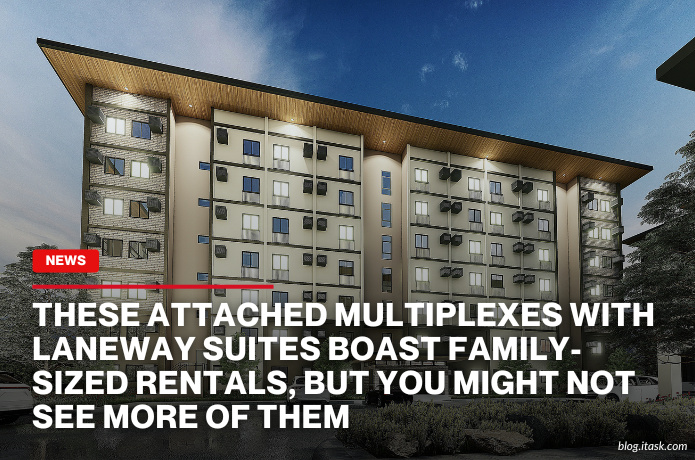These attached multiplexes with laneway suites boast family-sized rentals, but you might not see more of them
These attached multiplexes with laneway suites boast family-sized rentals, but you might not see more of them

Toronto's housing market is grappling with a shortage of family-sized rentals, and while attached multiplexes with laneway suites offer a promising solution, they remain a rarity in the city. These innovative housing models combine multiple units within a single structure and often include additional living spaces built over garages or in backyards, known as laneway or garden suites. Despite their potential to provide more spacious and affordable options for families, several challenges hinder their widespread adoption.
One significant hurdle is the financial viability for homeowners. Constructing a laneway suite can cost between $300,000 and $500,000, a substantial investment that many find daunting. Even with government incentives, such as forgivable loans and construction material rebates, the return on investment can take years, making it less appealing for property owners to pursue these projects .
Regulatory barriers also play a role in limiting the proliferation of these housing types. Zoning laws and building codes often impose strict requirements, such as angular plane rules and minimum distances between structures, which can complicate or even prevent the addition of laneway suites on certain properties . Although recent efforts aim to relax some of these regulations, progress has been slow, and many homeowners remain deterred by the complex approval processes.
Moreover, the intended use of these suites often diverges from their potential to alleviate the housing crisis. A significant number of laneway and garden suites are not rented out to the general public but are instead used by homeowners for personal purposes, such as housing family members or creating private offices . This trend limits the availability of these units to the broader rental market, reducing their impact on housing affordability and availability.
Despite these challenges, some developers and architects continue to advocate for the expansion of multiplexes with laneway suites. They argue that, with the right incentives and regulatory adjustments, these housing models can significantly contribute to addressing Toronto's housing needs. By providing more diverse and affordable options, especially for families seeking larger living spaces, these developments could play a crucial role in mitigating the city's housing shortage.
In conclusion, while attached multiplexes with laneway suites present a viable solution to Toronto's family-sized rental shortage, financial constraints, regulatory hurdles, and usage trends have limited their impact. Addressing these issues through policy reforms and targeted incentives could unlock the potential of these housing models, offering a path toward a more inclusive and affordable urban housing landscape.
